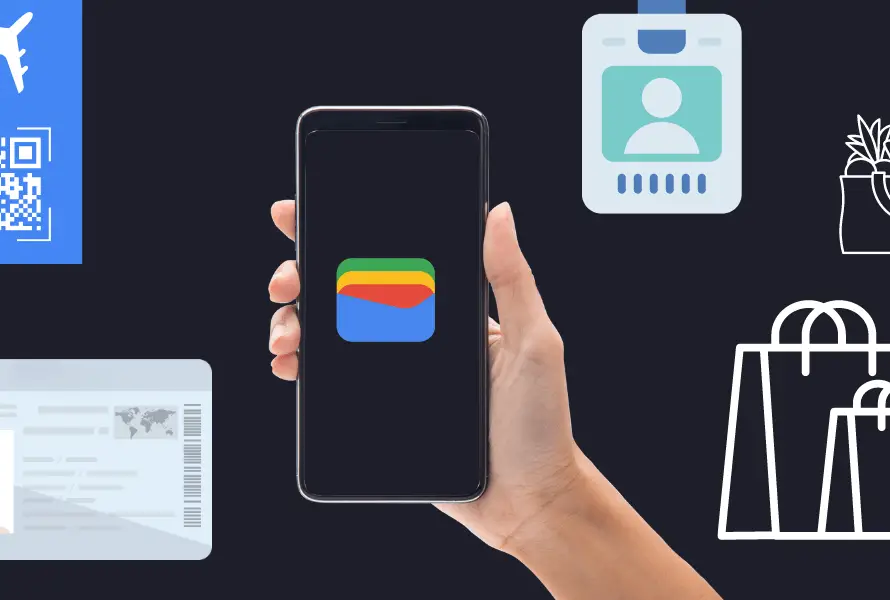Digital communication and file sharing are at the forefront of technology, WhatsApp, a leading messaging platform, is set to revolutionize how we exchange files. Mirroring the functionality of Android’s ‘Nearby Share,’ WhatsApp is reportedly working on an innovative feature that enables users to share files with people nearby.
This development, currently in its beta phase for Android users, promises to add a new dimension to the already robust capabilities of WhatsApp. While resembling Android’s ‘Nearby Share,’ the feature stands out with its unique approach to privacy and user interaction.
As we delve into the specifics of this upcoming functionality, we explore how WhatsApp expands its horizons, enhances user experience, and redefines the boundaries of file sharing in the digital age.
Overview of the New Feature
WhatsApp is considering introducing a new file-sharing feature, a significant enhancement to its robust platform. This feature, currently in the beta stage for Android users on version 2.24.2.17, is designed to facilitate the transfer of files between users in close physical proximity.
Accessible through a new section within the WhatsApp app, it exemplifies the company’s commitment to a seamless and intuitive user experience. Its unique activation method sets this feature apart—users need to shake their devices to initiate a file-sharing request.
This adds an element of physical interaction and serves as a deliberate gesture to engage the feature, minimizing accidental sharing. Prioritizing user privacy and security, the feature allows file sharing exclusively with contacts. It incorporates end-to-end encryption, ensuring that shared files remain confidential.
Aimed at users who frequently exchange files and seek a convenient and secure method for doing so with nearby contacts, this feature is poised to significantly enhance WhatsApp’s functionality, catering to personal and professional communication needs.

How the Feature Works
WhatsApp’s new file-sharing feature represents a fusion of innovation and user-centric design, offering a secure and straightforward way to share files with nearby contacts.
The process begins with users navigating to a specific section within the app, a design choice that maintains the familiar WhatsApp interface while introducing this new functionality. Users take a unique and interactive step to initiate file sharing – shaking their devices.
This action adds a physical dimension to the experience. It serves as a deliberate gesture to activate the feature, thereby minimizing accidental sharing. Once in file-sharing mode, users can choose recipients from their contact list, ensuring that files are shared only with known individuals, thus enhancing privacy and security.
The actual file transfer, which can include documents, images, and videos, is designed to be quick and efficient. Central to this feature is WhatsApp’s commitment to security; the entire process is protected by end-to-end encryption, ensuring that files are only accessible to the sender and the intended recipient and safeguarded against unauthorized interception.
The overall user experience is streamlined and intuitive, reflecting WhatsApp’s focus on creating user-friendly and secure interactions, thus significantly enhancing how users share files in close physical proximity.
Comparison with Android’s ‘Nearby Share’
While WhatsApp’s newly introduced file-sharing feature parallels Android’s ‘Nearby Share,’ it distinguishes itself through several vital aspects. The most notable difference is in its activation mechanism. WhatsApp requires users to physically shake their devices to initiate file sharing, introducing an element of interactivity and intentionality.
Android’s ‘Nearby Share’ employs a more traditional selection process through menus or quick settings. Privacy and security are paramount in both, but WhatsApp enhances this by limiting file sharing to contacts only, offering a more controlled and private environment than Android’s feature’s broader reach.
The user experience also varies significantly; WhatsApp integrates this capability within its familiar messaging platform, making it effortlessly accessible to its users. On the other hand, Android’s solution is a system-level feature, offering versatility across different apps and interfaces but requiring navigation through device settings.
WhatsApp extends its hallmark end-to-end encryption to file sharing, ensuring that files are accessible only to the sender and recipient. Android’s ‘Nearby Share’ also prioritizes secure transfers, though the specifics of its encryption and security protocols can vary.
While overlapping in their basic need for nearby file sharing, the target audience and usage scenarios diverge in preferences and habits, with WhatsApp catering specifically to its user base seeking an in-app solution.
While both features aim to facilitate file transfers between nearby devices, their approaches reflect distinct philosophies and design choices, catering to different user needs and preferences.
Benefit’s of WhatsApp Share
The new file-sharing feature in WhatsApp heralds a range of potential benefits, poised to significantly enhance how users interact and exchange information.
Foremost among these is its unmatched convenience; users can swiftly transfer files to nearby individuals, eliminating the need for more cumbersome methods like email or cloud services. This proves especially advantageous in meetings or social gatherings where immediate file sharing is beneficial.
The feature underscores a solid commitment to privacy and security, allowing file sharing exclusively with contacts and bolstering this with robust end-to-end encryption.
This aspect is reassuring in an era where digital privacy is a growing concern, enabling users to confidently share sensitive data.
Integrating this feature within the familiar interface of WhatsApp adds to its appeal, offering a user-friendly experience that doesn’t demand technical expertise. Its design prioritizes speed and efficiency, streamlining the file-sharing process and enhancing productivity, especially in professional environments.
Another significant advantage is its potential to operate with minimal or no reliance on internet connectivity. This attribute could be a game-changer in regions with limited internet infrastructure.
By necessitating physical proximity for file sharing, this feature subtly encourages more direct, face-to-face interactions, counterbalancing the prevailing trend of purely online communication.
The move towards electronic file sharing aligns with environmentally friendly practices, reducing the dependence on physical media like USB drives or paper. Overall, WhatsApp’s file-sharing feature is not just a technological advancement; it’s a thoughtful response to the evolving needs of users, blending convenience, security, and sustainability.
Current Development and Future Availability
The current development and future availability of WhatsApp’s new file-sharing feature is a topic of keen interest, as it represents a significant advancement in the app’s capabilities.\ the quality is in the beta testing phase and is available to a select group of users who are part of the WhatsApp beta program for Android, specifically in version 2.24.2.17.
This beta phase is crucial for WhatsApp to gather user feedback and ensure the feature operates seamlessly, addressing potential issues before a wider release.
The future availability of this feature to the general public remains uncertain. WhatsApp has not yet announced a definitive timeline for rolling out this feature to the stable version of the app.
This cautious approach is typical for app development, especially for features that significantly alter how users interact with the app and each other. The company is likely focusing on refining the quality, ensuring it meets its functionality, user experience, and security standards.
Given the potential impact of this feature on user experience and the positive reception it may receive during the beta phase, it’s reasonable to anticipate that WhatsApp will aim for a broader rollout in the future.
The exact timing of this release will depend on the outcomes of the beta testing phase. The company may gradually introduce the feature in stages, monitoring its performance and user feedback before making it available to all users.

Recent Updates and Related Developments
WhatsApp has been actively rolling out a series of updates and new features, reflecting its commitment to enhancing the overall user experience and keeping up with the dynamic needs of its global user base.
Among these developments, notable improvements have been made to WhatsApp Channels, offering more robust tools and functionalities that facilitate better group interaction and information sharing.
A particularly user-friendly addition is the ability to send voice updates, catering to users who prefer quick, spoken communication over typing. To foster greater engagement in group settings, WhatsApp has introduced the functionality to create polls within channels, providing a valuable tool for gathering opinions and facilitating decision-making processes.
Another significant advancement is the development of a ‘calendar search’ option, which promises to revolutionize message retrieval by allowing users to search for past conversations based on dates.
This feature is handy for users who need to reference older messages quickly. Alongside these user-centric updates, WhatsApp continues to prioritize security, likely enhancing its encryption protocols to safeguard user privacy, which is especially critical in light of the new file-sharing feature.
These recent updates not only enhance the functionality and usability of WhatsApp but also demonstrate the platform’s ongoing effort to evolve in line with user expectations and the fast-paced changes in the digital communication landscape.
Final Thoughts
WhatsApp’s continuous evolution by introducing new features, like the innovative file-sharing capability, alongside other significant updates, underscores the platform’s commitment to staying at the forefront of digital communication technology.
These developments, from enhancing group interactions with improved Channels and poll functionalities to introducing voice updates and a calendar search option, reflect a deep understanding of user needs and trends in online communication.
The new file-sharing feature, particularly its unique activation mechanism, heightened security, and focus on user privacy, stands out as a potential game-changer.
It adds a novel dimension to the app’s functionality. It addresses the growing demand for secure and convenient file sharing in our increasingly connected world.
As WhatsApp navigates through the beta testing phase and towards a broader rollout of these features, the platform balances innovation with user-centric design.
This approach enriches the user experience and cements WhatsApp’s position as a versatile and indispensable tool in personal and professional communication.
The anticipation of how these new features will integrate into daily communication routines is high, and the impact they are set to have on WhatsApp’s vast user base is undoubtedly profound.
As we look ahead, it’s clear that WhatsApp’s commitment to continuous improvement and adaptation will keep it a critical player in the ever-evolving landscape of digital communication platforms.


